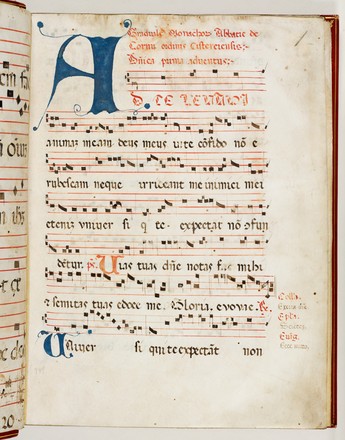Medieval production line
Medieval manuscripts took four main stages to make. The first was to make the parchment using animal skins soaked in lime to loosen the fur and then scraped, stretched and dried. The most prized parchment, known as vellum, was from the skin of a young calf. The parchment was then ruled up and the text or design was completed by the scribe. The scribe wrote with a quill pen made from the feather of a goose or swan. Next the miniatures, borders and letters were sketched on the page before being illuminated with gold and coloured pigments. The gold leaf was added first and burnished to create a shiny surface. The colours which followed were made from a variety of recipes using minerals and plant products. Vermilion was made from mercury and sulphur. Ultramarine blue was made from crushed lapis lazuli, a semi-precious stone imported from Afghanistan. Once this phase was completed the pages were folded, gathered and bound. Wooden boards were used for the binding, sometimes covered with leather or fabric. Each stage of production was usually undertaken by a different craftsperson in a medieval production line.



 Back to list
Back to list